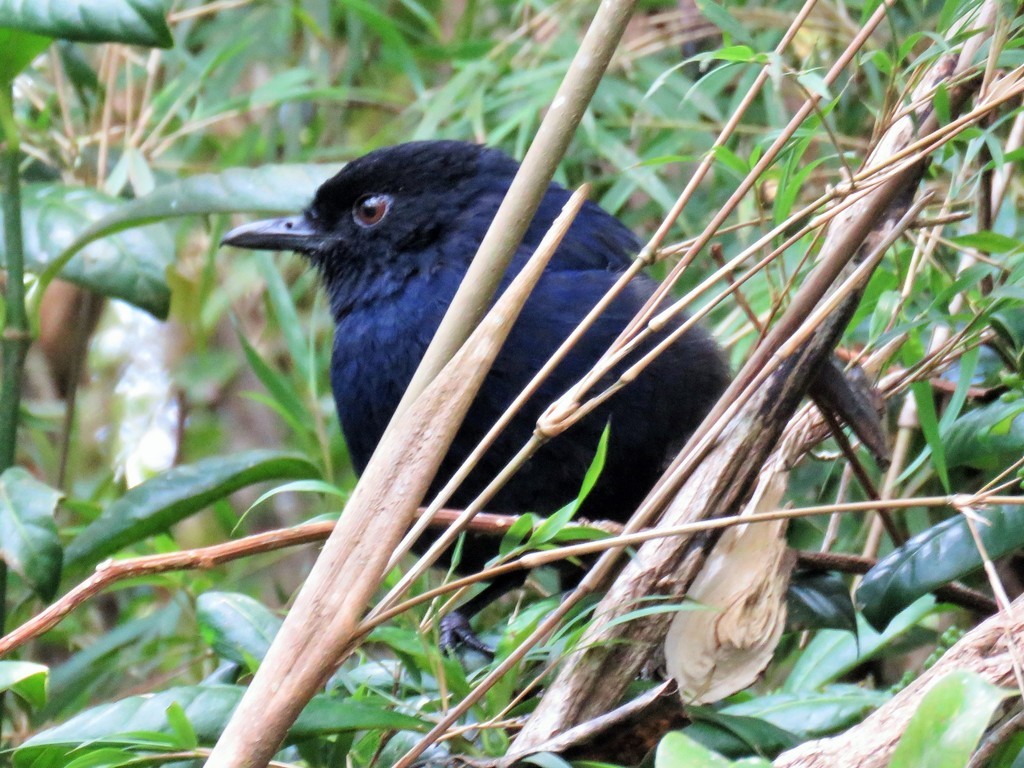Sri Lanka Whistling Thrush
A species of Whistling thrushes Scientific name : Myophonus blighi Genus : Whistling thrushes
Sri Lanka Whistling Thrush, A species of Whistling thrushes
Botanical name: Myophonus blighi
Genus: Whistling thrushes
Content
Description General Info
 Photo By susabirdspotter , used under CC-BY-NC-4.0 /Cropped and compressed from original
Photo By susabirdspotter , used under CC-BY-NC-4.0 /Cropped and compressed from original Description
The Sri Lanka whistling thrush (Myophonus blighi) is a whistling thrush in the family Muscicapidae. It is a resident endemic bird in Sri Lanka. It is found in the highlands of Sri Lanka in jungle or other dense forest near water. It is omnivorous, eating a wide range of insects, frogs, earthworms and berries. It lays one or two eggs in a neat cup-shaped nest in a bush or on a ledge near water. It does not form flocks, although several birds may be loosely associated in suitable habitat. This is a small whistling thrush, at only 20 cm. Adult males are dark blue with a darker head and back. There are bright blue patches on the shoulders, supercilia and forehead. The female is brown above and chestnut below, but has a bright blue shoulder patch like the male. The male sings its simple whistling song from trees, usually in deep cover. This is a notoriously difficult species to see, even when the males are singing in the breeding season, which starts in February. It is very shy, scarce, localised and declining due to habitat loss. Perhaps the best chance is at dawn at Horton Plains National Park 2000m up in the highlands of Sri Lanka and at a site near the Haggala Botanical Gardens close to Nuwara Eliya town. 
Size
22 cm
Nest Placement
Cliff
Feeding Habits
Sri Lanka Whistling Thrush primarily feast on insects, supplemented by snails, small reptiles, and amphibians. They forage on the ground, often near water, and exhibit extreme shyness, capable of remaining motionless for extended periods.
Habitat
The habitat of sri Lanka Whistling Thrush encompasses dense, evergreen mountain forests, preferably undisturbed, where it stays near swiftly flowing streams. It is partial to the shaded and moist environments of wooded ravines and gorges. The species thrives in areas rich with ferns, undergrowth, and low-hanging streamside vegetation.
Dite type
Omnivorous
General Info
Feeding Habits
Bird food type
Scientific Classification
Phylum
Chordates Class
Birds Order
Perching birds Family
Old world flycatchers Genus
Whistling thrushes Species
Sri Lanka Whistling Thrush